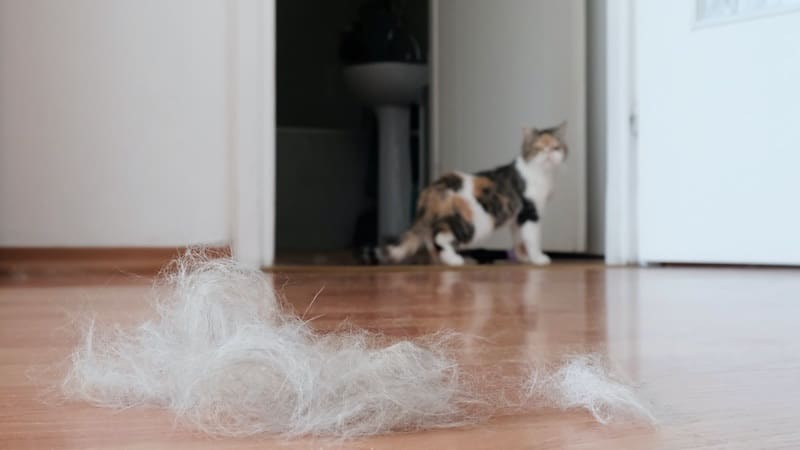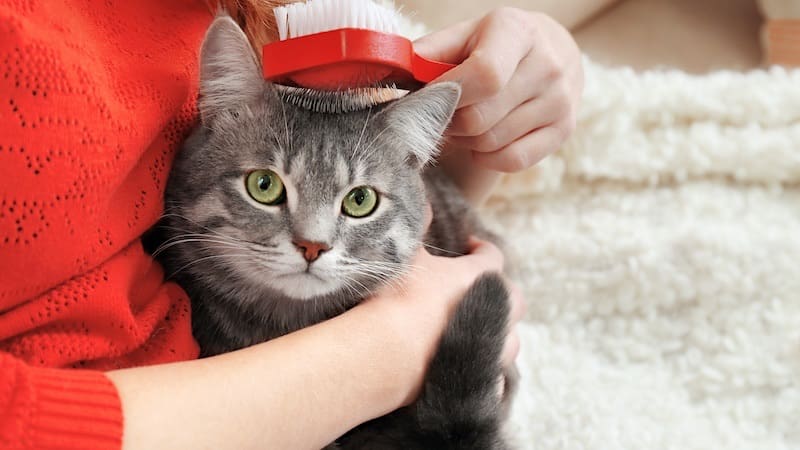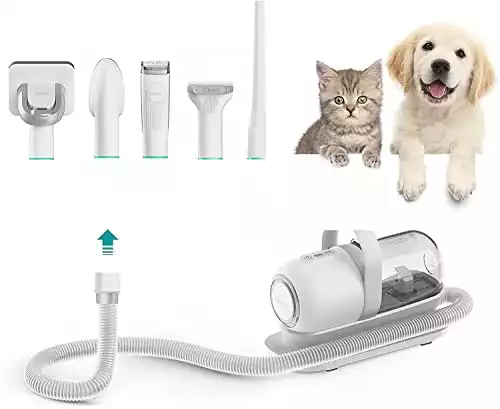Cats are known for their affectionate nature and playful personalities, but they are also notorious for shedding hair. Shedding is a natural phenomenon and if you don’t know how to control cat hair then before you know it fur can find itself all around your home, from furniture to clothing. It can also cause allergies and respiratory problems for some people.
Fortunately, there are several ways to control cat hair and minimize its impact on your home and health.
One of the most effective ways to control cat hair is through regular grooming. Brushing your cat’s fur daily can help remove loose hair and prevent it from spreading throughout your home.
Additionally, bathing your cat occasionally can help remove excess hair and reduce the amount of shedding. However, it is important to use cat-specific shampoos and to avoid over-bathing, as this can dry out your cat’s skin and cause further shedding which is the opposite of what we are trying to do.
Another way to control pet hair is by creating a designated space for your cat using an indoor or large outdoor cat enclosure while you are at work and out for the day. By providing your cat with a specific area to play, eat, and sleep, you can limit the amount of hair that is spread throughout your home.
Placing a cat bed or blanket in this space can help contain shedding and make cleaning easier. Investing in a quality air purifier can also help remove cat hair and dander from the air, reducing the risk of allergies and respiratory problems.
Understanding Cat Hair

Cat hair can be a nuisance for many pet owners, especially those with allergies. Understanding cat hair can help you better control it in your home.
Cats have two types of hair: guard hair and undercoat hair. Guard hair is the longer, coarser hair that you see on the surface of your cat’s fur. Undercoat hair is the softer, finer hair that lies close to the skin.
Both types of hair shed, but undercoat hair is more likely to cause allergic reactions because it contains more of the protein that triggers allergies.
Cats shed their hair naturally, and the amount of shedding can vary depending on the breed, age, and health of the cat. Some cats shed more in the spring and fall when they are shedding their winter or summer coats. Others shed continuously throughout the year.
Regular grooming can help reduce the amount of cat hair in your home. Brushing your cat daily can help remove loose strands of hair before it has a chance to fall off and settle on your furniture and floors. You can also use a damp cloth to wipe down your cat’s fur to remove both hair and dander.
Another way to help control cat hair is to provide your cat with a healthy diet. Feeding your cat a high-quality cat food can help keep their skin and coat healthy, which can reduce the amount of shedding.
Consider adding a supplement to your cat’s diet that contains omega-3 fatty acids, which can help improve the health of their skin and coat.
Grooming Techniques
Here are some grooming techniques that you can use:
Brushing: Brushing your cat’s fur regularly can help remove loose fur and prevent matted hair. This is especially important with a long haired cat. Use a soft bristle brush and stroke in the direction of hair growth.
Bathing: Some cats may not like water, but bathing them once in a while can help remove dirt and loose fur. Always use a cat specific shampoo and make sure to rinse thoroughly.
Trimming: Trimming your cat’s fur can help prevent matting and reduce the amount of shedding. Use electric trimmers designed specifically for cat’s hair.
It’s important to note that not all cats will tolerate grooming, so it’s important to start slowly and be patient. You can also seek the help of a professional groomer if you’re having trouble.
In addition to grooming, you can also try using a cat hair remover tool, such as a lint roller or a sticky tape, to remove loose fur from your furniture and clothing.
Remember, controlling loose cat hair requires consistent effort and patience. By using these grooming techniques, you can help keep your home and your cat’s coat clean and healthy.

Diet and Nutrition
Controlling pet hair starts from the inside out. A balanced diet with the right nutrients can help prevent excessive shedding and promote healthy skin and coat as well as improving overall health. Here are some tips to consider when it comes to your cat’s diet:
Choose high-quality cat food that contains essential nutrients such as Omega-3 and Omega-6 fatty acids, biotin, and zinc. These nutrients can help improve the health of your cat’s skin and coat.
Consider adding supplements such as fish oil or flaxseed oil to your cat’s diet. These supplements can help reduce the amount of shedding and promote a healthy coat.
Make sure your cat is drinking enough water. Dehydration can lead to dry skin and increased shedding.
Avoid feeding your cat table scraps or human food. These foods can be high in fat and may not provide the right nutrients for your cat’s health.
It’s important to note that every cat is different, and what works for one may not work for another. Consult with your veterinarian to determine the best diet and nutrition plan for your cat.
Cleaning Tips
Keeping your home clean is essential to preventing cat hair from accumulating. Here are some cleaning tips to help you keep your home free of cat hair:
Vacuum your home regularly, especially areas where your cat likes to spend time.
Use a lint roller or sticky tape to remove pet hair from upholstered furniture, clothing, and other surfaces.
Wash your cat’s bedding and toys regularly to remove hair and dander.
Clean your cat’s litter box daily to prevent hair and dander from spreading throughout your home.
Recap: Brush your cat regularly. Regular brushing can help remove hair that’s loose and prevent it from ending up on your furniture and clothing. Use a high-quality cat food which can help reduce shedding and promote healthy skin and coat. Consider trimming your cats hair – there are a variety of cat trimmers available that will reduce shedding and control cat hair.
Traditional pet hair trimmers create a lot of mess and hair in the home. The best selling P1 Pro grooming kit with vacuum function collects 99% of pet hair into a vacuum container while trimming and brushing hair, which keeps your home clean. Ideal for cat allergy sufferers as the dander is collected before getting into the air.
Managing Allergies
If you’re allergic to cats, you know how difficult it can be to live with one. But there are ways to manage your allergies and still enjoy the love and companionship of a feline friend.
First, it’s important to keep your home as clean as possible. This means vacuuming regularly, using air purifiers, and washing your cat’s bedding frequently. You may also want to consider using hypoallergenic bedding for yourself, as well as allergy-proof covers for your furniture.
Another way to manage your cat allergies naturally is to groom your pet regularly, especially long haired cats. This can help reduce the amount of hair and dander that they shed. Brushing your cat daily can also help distribute their natural oils and keep their coat healthy.
If your allergies are particularly severe, you may want to consider immunotherapy. This involves getting regular injections of small amounts of allergens to help your body build up a tolerance. This can take several months or even years, but it can be very effective in reducing allergy symptoms.
Finally, if you’re considering getting a cat but you’re not sure if you’re allergic, spend some time around cats before making a decision. You may find that you’re not as allergic as you thought, or you may discover that your allergies are too severe to live with a cat.
Remember, managing allergies takes time and effort, but it’s worth it to have a loving companion by your side.
Conclusion
Controlling cat hair can be a challenging task, but with the right tools and techniques, it can be managed effectively. By following the tips and tricks outlined in this article, you can significantly reduce the amount of cat hair in your home and keep your living space clean and healthy.
Regular brushing and bathing your cat is essential in managing cat hair. It not only helps to remove loose hair but also keeps the coat healthy and shiny. Additionally, using a good vacuum cleaner and air purifier can help to eliminate cat hair and dander from the air and surfaces in your home.
Remember, controlling cat hair is an ongoing process, and it may take some trial and error to find the best methods for you and your cat. But with patience and persistence, you can achieve a hair-free home and enjoy all the benefits of cat ownership without the mess.






